
ULMAN
By Sheldon McGowin 1975
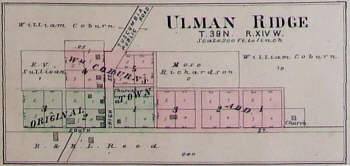
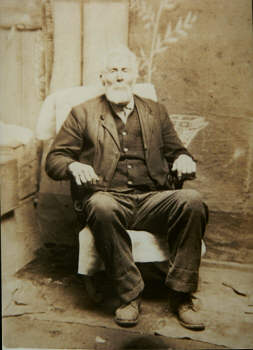 buried at Gott Cemetery |
In March 1861, the first State Guard Company, having a strength of over 100 men, was organized at the house of Joseph Ulman. This company upheld Governor Jackson who favored Secession. Members of the Ulman families, in the beginning, favored Secession and held allegiance to the South, except Andrew S. Ulman who joined the Union Home Guard forces as Second Lieutenant in Company D.
A log building served as the first school, raised in 1835 on the John Davis Plantation. The next building was the typical "little red school house" with homemade desks, benches, etc., which provided the students with lots of splinters. The children later attended classes in the Modern Woodmen Hall in the middle of town until a schoolhouse was erected across Hwy. C.
This school building was built in 1912-1914 and contained two rooms, one of which housed the first six grades; the other held the seventh and eighth grades and first two years of high school. This was in operation until 1964 when the district was consolidated with School of the Osage.
A post office was established at the site of "Ulman's Ridge" in 1857 with James Karr as the postmaster, but a town or village was not platted and filed for record until Nov. 4. 1889. It had a population of about 50 people at that time, with a general store and a blacksmith shop set up for the folks who lived in the surrounding countryside. It was actually considered a "settlement" in 1889. Other "settlements" in Miller County at the time included Charlestown/St. Elizabeth, Mary's Home, Rocky Mount, Pleasant Farm and Ramsey (per Goodspeed's 1889 history of the area).
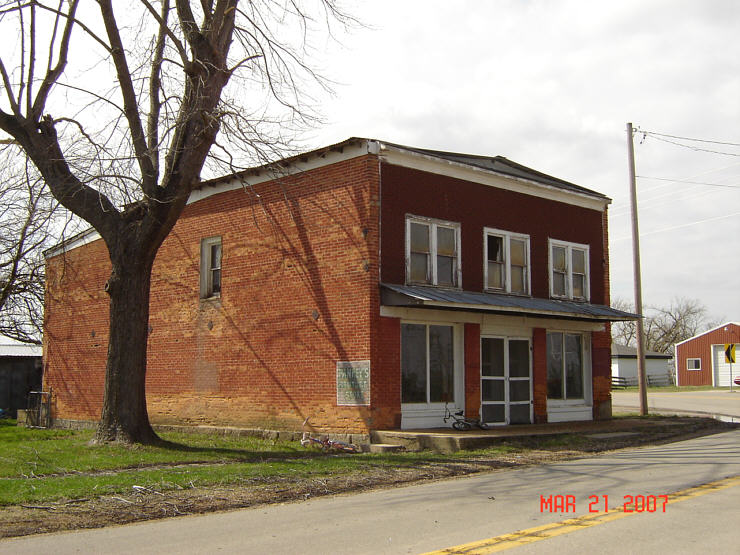
Ulman Mercantile
The post office had been located at different sites since its beginning-first in a private home, then only a stopover for the mail en route to Jefferson City from Lebanon by horseback. The post office was also housed in the corner of Charles Bass' store until it was finally moved into the building vacated by the Bank of Ulman.
William & Elizabeth (Rice) Coburn moved into Miller County in the years following the Civil War. William was born in Ohio about 1834 and Elizabeth was a native of Pennsylvania, born in 1835. They married around 1855 and when they came to Miller County they had 5 children (all born in Illinois per census). Joseph M. Coburn, who was probably a brother to William, had settled in the Ulman Ridge area of Glaize Township before 1870. In his household in the 1870 census was his wife Elizabeth (Pumphrey) and a daughter, Minnie.
Twelve lots made up the original town of Ulman's Ridge, which also went by the name of "Needmore". In October 1871, William & Elizabeth (Rice) Coburn purchased 160 acres from Deborah Phillips, widow of Joseph S. Phillips, for $1600. On Nov. 4, 1889, William & Elizabeth recorded a plat for a new town and called it "Ulman's Ridge". It was a small village with only three blocks and two streets laid out which they named High & Front Streets.
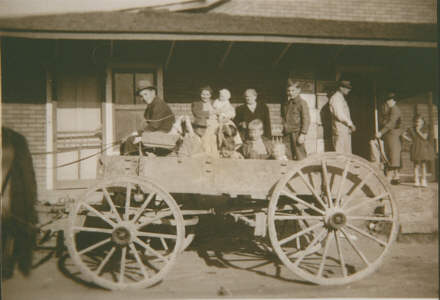 |
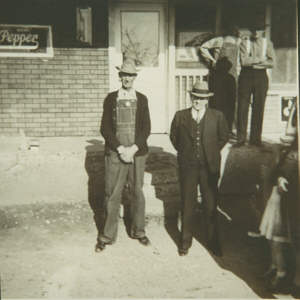 Barney Dawson & Jim Clark |
The Ridge was dropped from the name, leaving the town known as Ulman, which became a banking center, a milling center, and a trading center of much importance. In 1894, they added 5 more blocks to their town calling it "Coburn's First Addition to the town of Ulman's Ridge."
William & Elizabeth Coburn donated land to the Methodist Episcopal Church of Glaize Township in 1888, whose trustees were Peter Lupardus, Almon C. Keyes and William Coburn. In 1903, they gave the church an additional piece of land. In 1897, they donated a parcel of land to the Ulman Baptist Church, whose trustees included Joseph D. Shikles, Isaac Wilson Hendricks, and Phineus George.
In July 1905, they donated a small parcel of land to the Ulman Camp No. 8009 of the Modern Woodmen of America who constructed a meeting hall on the location.
- Rececca Jane Coburn born IL married Jinkins Williams, Nov. 28. 1878
- Clarence W. Coburn born 1860 IL (no marriage record found)
- George J. Coburn born 1863 IL married Sophia Woolsey, 11/17/1895
- Charity Samantha Coburn born IL married Alexander R. Gott. ????
- Albert C. Coburn born 1870 IL (no marriage record)
- Frank A. Coburn born 1873 MO married Mary McClain 1/17/1905
- Theodore Coburn born 1879 MO. (no marriage record)
- Clinton J. Coburn born 1877 MO. died 1878 age 1 yr.
During the Miller County census of 1880, William & Elizabeth were living in the Ulman's Ridge area with six of their eight children. Their youngest son died in 1878 and their oldest daughter Rebecca had married Jenkins Williams in 1878. Their neighbors in 1880 were the families, Reed, Witt, Sullivan, Carico, McComb, Vaughan,.Wilcox and Wyrick.
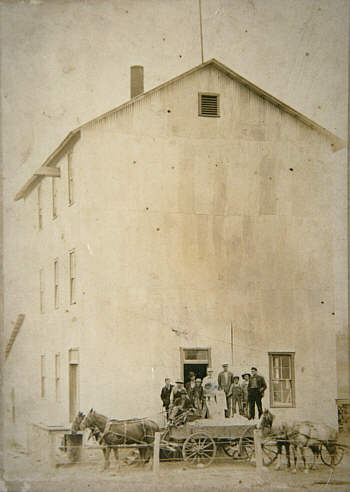 |
William & Elizabeth were instrumental in the founding of "Ulman's Ridge". They did not remain in the community to see it become a hub of activity during the early to mid 1900s. By 1932 the business places include a general store owned by Robert Reed; another general store was operated by Roy Williams; a mill was owned by Elmer Sloan, a Farmers Exchange was in the small town, managed by A. F. Bilyeu; and a telephone exchange was operated by Bert Lupardus. Charles Bass was the town's postmaster during these years. The Bank of Ulman was begun in 1907, about the time that the William Coburn family moved from Miller County to California.
During the heyday of the town there were several stores and businesses. There were general stores, blacksmiths, garages, sawmills, milliner shops, drug stores, restaurants, barber shops, hotels and a telephone exchange. A fire was among the greatest contributors to the decline of businesses which were not rebuilt.
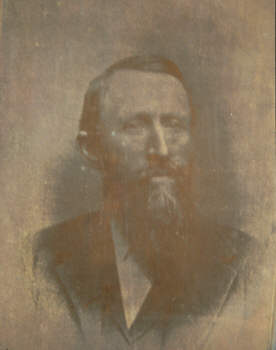 |
Ulman was the home of Henry Clay Jackson, a second cousin to Andrew Jackson. He was born in Louisiana, Mo., where his family moved to from Kentucky after coming from Ireland. He married Sue E. Chadwick and they made their home south of town. Mr. Jackson lived to the age of 92 1/2 years.